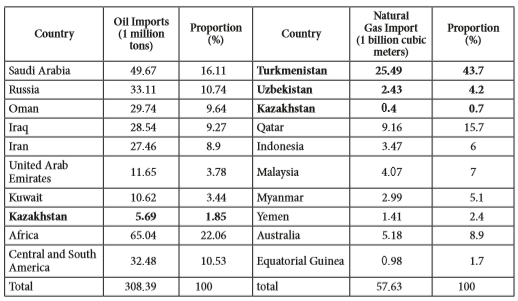In September 2013, Chinese President Xi Jinping proposed the building of the “Silk Road Economic Belt” initiative to inject new impetus to the development of cooperation between China and Central Asian countries, and Central Asian countries responded enthusiastically and actively participate in. The docking of China and Central Asian countries have achieved good results, and has made great progress in the areas of mechanism, trade and investment, finance, production capacity, humanities, etc., and large projects have been implemented steadily. The practice has proved that the “Belt and Road” initiative has effectively tapped the development potential of Central Asian countries, promoted regional resource integration, and helped the economic transformation of Central Asian countries to achieve mutual benefit and win-win results.
The documents signed under the framework of “Belt and Road” initiative include “Sino-Kazakh Economic Cooperation and Long-term Development Plan (2020)”, (September 2013), “Framework Agreement of Strengthening Cooperation of Industrial Capacity and Government’s Investment” (August 2015), “Docking and Cooperation Plan of ‘Silk Road Economic Belt’ and ‘Bright Road’ New Economic Policy” (September 2016). Documents signed by China and Uzbekistan under the framework of “Belt and Road” initiative are “Protocol of Expanding Mutual Beneficial Economic and Trade Cooperation under the Framework of “Silk Road Economic Belt” on June 17 2015 and “Memorandum of Understanding on Commodity Trade Cooperation” in 2016 signed by commercial department of the two countries. In the “Belt and Road” International Cooperation Summit Forum of 2017, China’s National Development and Reform Commission and the Ministry of Economic Affairs of Kyrgyzstan signed “Memorandum of Understanding of Jointly Promotion of Industrial Capacity and Key Investment Cooperation Projects”.
Since the proposal of “Belt and Road” initiative, investment and trade cooperation between China and Central Asian countries has entered a new stage. China has become the largest trading partner and largest source of foreign direct investment in most of the Central Asian countries, which strongly supported the economic recovery of the Central Asian countries. Although the economic downturn and currency depreciation of Central Asian countries in 2014–2018 caused their bilateral trade volume with China declined, there has been no significant change in physical quantity. Trade volume of traditional main import and export commodities (oil, natural gas, cotton, minerals, agricultural products, etc.) has increased.
Fourthly, the effective expansion of energy cooperation between China and Central Asian countries has achieved mutual benefit and win-win situation. China has gained new sources of energy and guaranteed its diversification of energy imports, while Central Asian countries got access to Chinese investment, technology and a large and stable energy market. The energy cooperation between China and Central Asian countries is mainly concentrated in three aspects:
First of all, energy trade continues to increase. Since 2000, Central Asian countries have gradually become an important source of China’s oil and gas resources (see Table 1). From the perspective of energy trade, China’s import focus from Central Asian countries differs due to energy endowments. Natural gas accounts for a higher proportion of Central Asia’s energy supply to China. In 2015, Central Asia’s natural gas imports accounted for 87.36 % of China’s total imports, and oil imports accounted for less than 1.5 % of China’s total imports. Natural gas is mainly imported from Kazakhstan, Turkmenistan and Uzbekistan, and oil imports are mainly from Kazakhstan. The oil and gas supply adopts a supply mode of “mainly pipeline transportation, supplemented by road and rail transportation”. In general, Central Asia is more dependent on Chinese oil exports than China’s import dependence on Central Asia.
Judging from the differences in the diversity of cooperation content and the depth of cooperation, Kazakhstan is the country, which Chinese oil companies entered first, have the longest period and the widest range of cooperation development period, get the largest number of exploration and development rights and export most engineering technology services. Turkmenistan ranks second. With the construction of the China-Turkmenistan Gas Pipeline, China has also strengthened its cooperation with Turkmenistan in the field of natural gas technology services. China’s oil and gas technology services in Uzbekistan have also evolved from the export of petroleum equipment spare parts and the provision of geophysical exploration, drilling and logging to the upgrading of engineering technologies such as old oil field recovery. The comprehensive, large-scale and high-level energy cooperation between China and Central Asian countries will not only change the energy pattern in Asia, but also have a profound impact on the world energy pattern.
Table 1. Sources of China’s Oil and Gas import in 2014

Source: China Customs Statistical Yearbook (2015).
As of the beginning of 2016, China’s total oil imports from Central Asian countries accounted for 1.85 % of total oil imports, while natural gas imports accounted for 48 % (see, Table 2.). The import of oil and gas resources in Central Asian countries effectively optimized China’s overseas energy supply structure. At the same time, as China is such a large and stable export market, cooperation with China greatly promoted Central Asian countries’ production of oil and gas resources, which led to rapid economic development.









